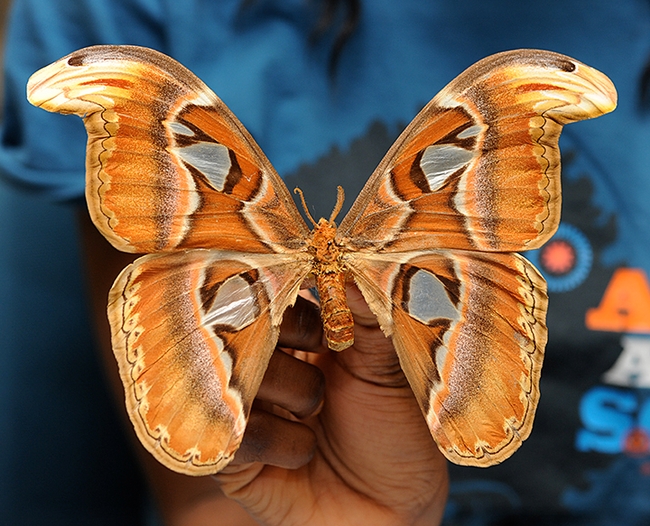
The Bohart Museum of Entomology at UC Davis is celebrating National Moth Night on Saturday, July 30 from 8 p.m. to 11 p.m. and you're invited. The insect museum is located in Room 1124 of the Academic Surge Building, 455 Crocker Lane.
Indoors you'll see the Bohart Museum's global collection of moths, and outside, within a short walking distance, you'll see moths and other insects hanging on a white sheet in the blacklighting display. They are drawn there by an ultraviolet (UV) light.
The open house is free, family friendly and open to the public. Folks are invited to bring photos or moth specimens from their house, yard or neighborhood that they would like help in identifying, said Tabatha Yang, education and outreach coordinator. There also will be a craft activity, cookies, and "hot cocoa for anyone who needs help staying up past their bedtime," Yang quipped.
Back in 2019, before the COVID pandemic, the blacklighting display drew at least 11 different species from five moth families: Tineidae, Tortricidae, Pyralidae, Geometridae, and Noctuidae, according to Bohart associate and "Moth Man" John De Benedictis.
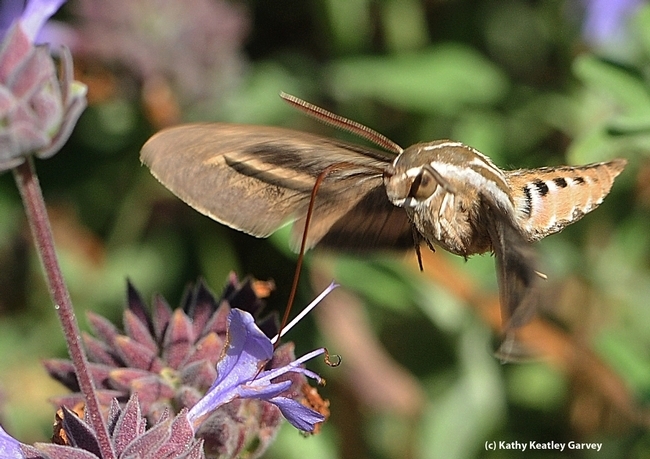
What can visitors expect to see? "We will highlight the amazing moths in our collection and in particular some of the larger and more dramatic ones, such as the Atlas Moths, the White Witch, the Urania moths, and the many kinds of Sphinx (or hummingbird) moths. But, we'll also introduce people to the beautiful Tiger Moths and some of the tiniest moths that may have a wingspan of less than a quarter of an inch!"
How many moths now in the collection? (and how many butterflies). "I believe the total number of Lepidoptera (moths and butterflies) in the Bohart Museum must be somewhere near 1/2 million specimens. We have two full compactor aisles of just butterflies and three aisles of just moths, and since the species of moths in the world (160,000) outnumber butterflies (17,500), we likely have about that ratio in our research collection. Since butterflies tend to be more colorful than moths they are more often collected, so we are much heavier on the number of specimens of butterflies.
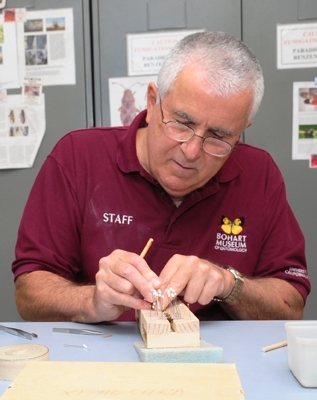
Do you have a favorite moth? And why? "It's difficult to pin down a single species as a favorite, but one group I particularly love is the Arctiinae, generally called Tiger Moths. Within this group are many medium-sized species that strongly resemble wasps, and they are particularly abundant in the Neo-Tropics. I fell in love with them on my first ever trip to tropical America in Costa Rica, where dozens of different species came to the lights at night. Their amazing mimicry of stinging insects serves to protect them, and they can be a wonderful lesson on ecology in our rainforests."
Smith, who donates his time, talents and expertise to the museum, received a 2015 “Friend of the College” award from the UC Davis College of Agricultural and Environmental Sciences for his work. (See news story)
The Bohart Museum, founded in 1946 and directed by Lynn Kimsey, UC Davis distinguished professor of entomology, houses a worldwide collection of eight million insects. It also houses a live "petting zoo" (Madagascar hissing cockroaches, stick insects and tarantulas) and a insect-themed gift shop.
Attached Images:

Entomologist Jeff Smith (second from left), curator of the Bohart Museum's Lepidoptera collection, talks to visitors at a recent Moth Night. (Photo by Kathy Keatley Garvey)
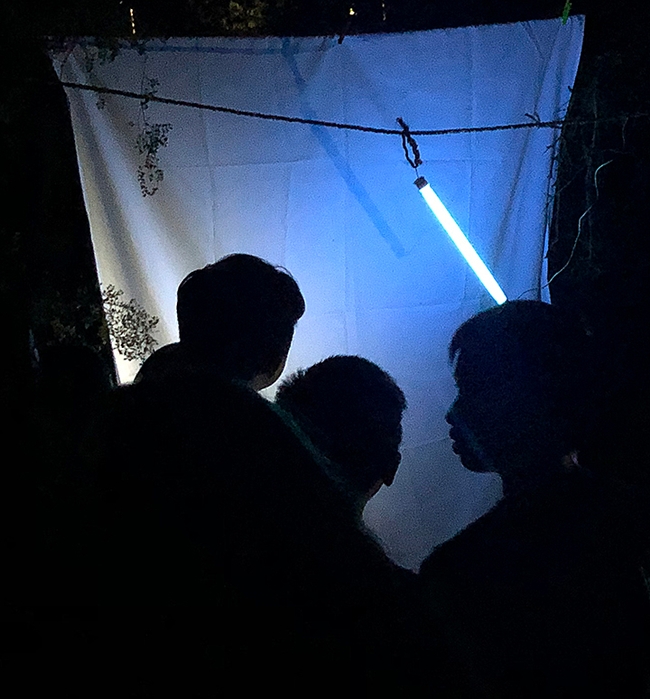
Youngsters delight in the blacklighting display as they watch moths land on the UV-illuminated white hanging sheet. (Photo by Kathy Keatley Garvey)
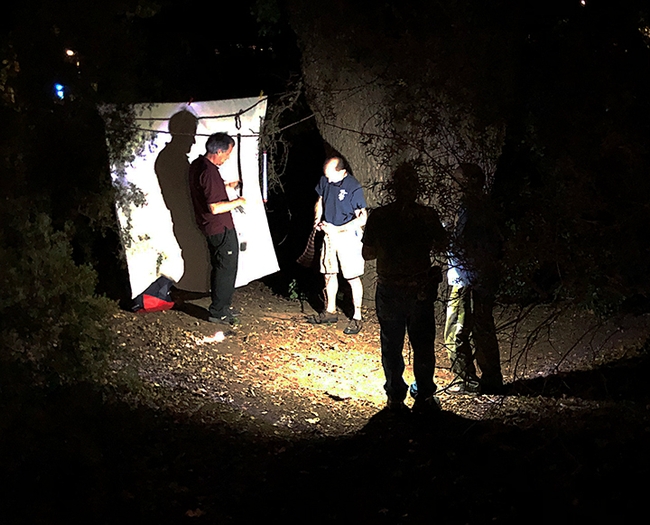
The Bohart Museum's blacklighting display is an opportunity for folks to learn about moths. (Photo by Kathy Keatley Garvey)